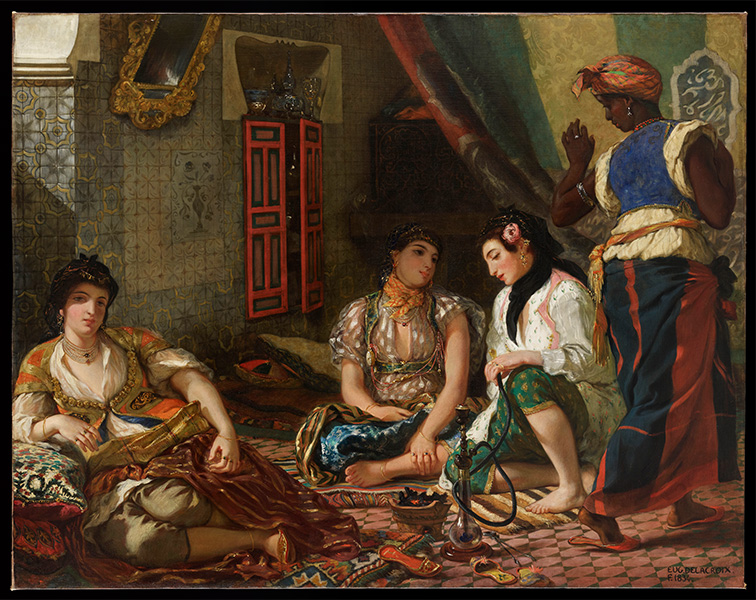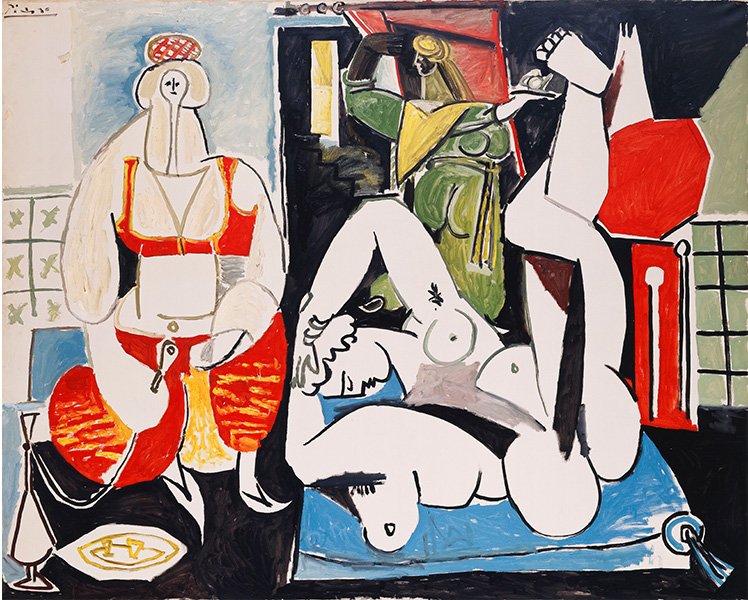In the shoes of the great masters of painting
Picasso slipped into the lives of the old masters as vehicles for his own expression. The Variations were his main focus for fifteen years. The artist also took on Poussin, Cézanne, Cranach, and Rembrandt. In his paintings, the positions, features, roles, and expressions of the figures change; they are transformed into allegories, into a praise of tenderness, or, at times, into indignation. Picasso uses carefully calculated staging to make his protagonists evolve. We can sense the artist's mood —his happiness, his sorrow, and his angry outbursts. He engages the viewer, conveying his creative world. Under his majestic, theatrical paintbrush, each subject and form is new.
"It's hard enough when you're alone. What an idea to bring another painter into your studio!"[1]
The Femmes d’Alger series was produced in the Grands Augustins studio in Paris, coinciding with the death of Matisse (to whom Picasso paid homage in the Ateliers series, painted in Cannes) and the time when the artist met Jacqueline, after a happy interlude following his breakup with Françoise Gilot, and, last but not least, the beginning of the Algerian insurrection. While Picasso was eagerly engaged in changing the voluptuous figures and their positions, invigorating bodies, colors, and shapes, working on a profusion of details, and experimenting with other pictorial approaches; while he was paying tribute to his much-admired Delacroix, it was hardly a trivial choice to produce this painting at that time. We all know how closely Picasso —whose path was complicated and full of contrasts— followed current events and captured the moment in his work, in which his emotions and his daily life always played a major role.
[1] Quote from the book by Hélène Parmelin, Voyage en Picasso, Paris, Éditions Robert Laffont, 1980, p. 77.







 Summary
Summary